Introduction
By design and structure, most museums are architecturally fascinating. For instance, the world-famous art museums, such as the Louvre and the Guggenheim are also architecturally important in Abu Dhabi. These structures were designed and intended for design lovers. There are marginally odd museums globally, however, that may not have structural and architectural innovations reflected in their designs. Nevertheless, they still reflect some aspects of structural and architectural innovation. In fact, the notion of museum’s elements usually results in buildings that are equally as unique.
For instance, the Rose Museum found in China is constructed with stainless steel designed to reflect rose and the Fire Museum constructed in Poland reflects a design inspired by flame copper exterior. Architects and designers have often used innovations and designs to capture their ideas and subsequently, creating exceptional museums with remarkable architectural designs and innovative features. Consequently, such works tend to inspire the next design-focused developers to improve on previous developments (Tardiff, 2016).
On this note, the theme of green buildings and sustainability as reflected in structural and architectural innovations have presented new opportunities for modern museums to advance sustainability as a means to interpret and convey heritage and reach a wider target audience. Hence, museums of today tend to offer innovative and effectual solutions to protect collections while also preserving the environment. It is also noted that the culture of sustainability enhances efficient use of resources and social responsibility (Pencarelli, Cerquetti, & Splendiani, 2016).
Subject
This report investigates the structural and architectural innovations in the Louvre and the other planned museums of Abu Dhabi with the specific focus on issues related to the design and the green aspects of the museums.
The ruler of the UAE, Sheikh Khalifa bin Zayed Al Nahyan, selected some of the best global architects to design museum structures for the city’s Cultural District, which has now become a significant landmark in the urban renewal of Abu Dhabi. To attain the best, the government worked with the France’s Musée du Louvre and New York’s Guggenheim. Consequently, Louvre Abu Dhabi and Guggenheim Abu Dhabi, as they are now called respectively, are the first branches of major museums to be constructed in the Middle East. As such, it is imperative to understand how these museums and others planned museums in Abu Dhabi advance sustainability.
Background information of the subject
The world is currently grappling with effects of global warming noted in environmental crises that affect all parts of the world. Greenhouse gas emission has been identified as the major potentially dangerous for the global temperature (Byers, 2008). It is also observed that some plants and animal species are now facing extinction while frequencies and intensity of droughts, floods, hurricanes, and wildfires among others have escalated significantly.
Most of these challenges have been initiated and sustained by a culture of consumption and destruction. Activities involving extraction of natural resources and manufacturing are largely responsible for massive destruction of the environment. It is imperative to note that the current rate of utilisation of natural resources and subsequent pollution are unsustainable. Critics have claimed that the ultimate effects of these actions will lead to the planet’s inability to sustain life (Pencarelli et al., 2016). Thus, interventions are needed to prevent the impending crisis.
Traditionally, countries have diverse ways of dealing with nature. While the US considers nature as an object that should be harnessed, conquered, and controlled, emerging issues have forced new ways of relating with nature. Environmental laws and regulations are often controversial and subject to political influences. Today, however, issues of climate change and sustainability have reached museums. For instance, the Smithsonian National Museum of Natural History was accused of undermining an exhibition that portrayed the effects of global warming on the Arctic in the spring of 2007 (Byers, 2008). The Smithsonian instead focused on explaining the association between climate change and human activities. It however eliminated illustrations that showed severity of global warming on the Arctic.
On the contrary, other museums have embraced the discourse of climate change and sustainability positively. Specifically, these museums have incorporated aspects of green buildings and sustainability into their designs and operations. Scholars have referred to such museums as ‘green museums’ (Brophy & Wylie, 2006), but Abu Dhabi is museums are seen as a museography. Green museums are considered as museums that engage in sustainability practices, such as eco-friendly practices and educational strategies.
While initial leadership in museum sustainability emanated from the American Alliance of Museums, the some museums have focused on unity to advance shared practices and standards. Today, however, museums do not have any shared practices on environmental protection and sustainability (American Alliance of Museums, 2013). In fact, museums have started to borrow standards from other fields to apply in their practices. As such, over the next few years, museums will rely on well-defined standards or choose how to react to environmental issues independently. Nevertheless, all different types of museums have adopted some sustainability measures through construction of green buildings (Byers, 2008).
Green museums have emerged as the most recent standards in the management of museums, and they have attained significant interest among various stakeholders. For instances, since the year 2008, green museums have attracted attentions of professionals who have focused on advancing its discourse on literature.
Some scholars have argued that sustainability is inevitably a core role in the mission of museums, relating to cultural preservation and promotion of heritage and values to the future generation while advancing cultural well-being of a community (Kuttner, 2009). In this regard, museums, just as other institutions, are expected to advance sustainable practices and behaviours as they focus on environmental, economic, and social affairs.
The environmental discourse in museums concentrates majorly on interventions that help to reduce consumption of energy and efficient use of available resources. Social debates focus on promoting physical and intellectual accessibility to all stakeholders (Pencarelli et al., 2016). Lastly, museums are nonprofit entities that provide public good and, therefore, from economic point of view, they are expected to have positive externalities that advance sustainability through public funds. Thus, modern museums should focus on all three aspects of management in their approaches to sustainability.
By focusing on sustainable behaviors in museum management, these institutions should develop multi-dimensional and multi-stakeholder methods to realise long-term outcomes in their sustainability endeavours. Current literature on museum sustainability has demonstrated that most professional and scholarly discourses and studies have majorly focused on two issues.
First, these are mainly environmental issues. That is, museum policies and practices have been developed to enhance environmental protection and reduce negative impacts on the environment, as well as to provide vital information on climate change (Bickersteth, 2014). Second, museums are also involved in socio-cultural interventions.
Socio-cultural issues, for instance, have been considered as contributions made by museums to well-being of communities and visitors. In addition, they also offer educational materials, exposition, and conferences that promote environmental conservation and sustainability while focusing on positive behaviours for new and future generations. However, structural and design innovation as aspects of environmental protection measures driven by museums are recent topics that have not been thoroughly explored because they can only be observed in newly constructed buildings (Pencarelli et al., 2016).
In the last decade, for instance, major international museums have concentrated on green technologies that advance energy conservation and low consumption (Madan, 2011). Although museums are not heavy consumers of energy, they have often focused on adhering to higher standards of lighting, environmental control, safety, and security of users and visitors. These actions are also recommended to protect their collections from extreme environmental conditions. Furthermore, museums, just like other institutions, are now concerned about their footprint on the environment.
As such, they now focus on effective waste management and reduce exploitation of natural resources to run their affairs. For instance, building materials in modern museums are now derived from green building materials. Specifically, construction has been a key area of focus for many contemporary architects and designers (Zannis et al., 2006). Zannis et al. (2006) refer to these modern museums as eco-sustainable buildings. It noted that innovative structural approaches and technologies in new eco-sustainable buildings and structural improvements for reconstruction and retrofitting of old buildings are some of the major improvements toward sustainability.
The project in Italy reflects these efforts (Rota, Corgnatia, & Corato, 2015). Two Italian museums, namely Museum Bardini located in Florence and Museum Pompeo Aria situated in Marzabotto, are known for their energy efficiency and sustainability approaches noted in retrofitted and newly constructed structures (Rota et al., 2015). Lastly, the concept of the end-of-pipe approach has also gain recognition. These are mainly techniques applied to save energy consumption by using simple approaches, such as installation of energy saving light bulbs like LED.
For instance, the State Hermitage Museum in St. Petersburg and the Banbury Museum in the UK have adopted this technique to demonstrate their commitments to energy efficiency (Pencarelli et al., 2016). In addition, new museums continue to set new standards. In Italy, for example, Explora and A come Ambiente have adopted some best practices toward sustainability (Pencarelli et al., 2016). These few examples demonstrate how sustainability has become a significant area of interest for modern museums.
There are currently available tools to assess impacts of museums on their environments. The collateral impacts of museums on the environment can now be evaluated using carbon footprints tools – a simple metric that demonstrates impacts noted on the environment from specific activities of a given organization or a country. From a narrow perspective, Madan (2011) looks at institutional and people factors with specific references to practices that advance sustainability. It is observed that management gap is a factor that negatively affects sustainability efforts of museums.
Objectives and the importance of the subject
The purpose of this report is to demonstrate how Louvre Abu Dhabi and other planned museums have incorporated structural and architectural innovations to advance sustainability as reflected in the design and the green aspects of the museums. To this end, the study will present new knowledge on the importance of environmental conservation to museums, their efforts for less carbon footprints, advancing green building technologies, and management practices that promote environmental friendly practices.
From an extensive literature review, interviews, and surveys, this research would present findings that would assist other museums and even other organizations to adopt green building practices. Specifically, the findings of this research will present best practices for museums considering environmental protection and sustainability in their building structures and designs.
Research questions
To meet objectives of the research, the following questions were formulated.
- What is sustainability with regard to the environment for contemporary museums?
- Are Abu Dhabi museums concerned with sustainability in their structural and architectural innovations?
- How do museums in Abu Dhabi promote green building aspects in their innovative designs?
- What are the current sustainability challenges and recommendations to improve them?
Significant of the research
As impacts of global warming intensify, architects and designers of modern buildings have embarked on practices that promote sustainability. As such, they tend to incorporate their innovations in structures and designs of buildings. Museums, just like any other modern buildings, have taken centre stage in green buildings aspects. Notable aspects of green buildings in structures and designs shape the current discourse. Abu Dhabi boasts of some of the most modern museums in the Middle East. This research will demonstrate how these buildings have adopted sustainability practices in their structures and designs.
Forecast the organisation of the report
This report presents methodology, results, discussion of results, and, finally, conclusion and recommendations.
Methodology
In this research report, the study aimed to examine structural and innovation designs that promote green building aspects and sustainability in Abu Dhabi museums.
An exploratory research design was used to collect qualitative data from architects and designers who have worked and/or intend to work in the design and construction of new museums in Abu Dhabi. The research design was meant to collect in-depth information on structural and design innovations that have incorporated aspects of green buildings in their designs.
Open-ended questionnaire was used to collect data on structural designs, innovations, aspects of green buildings, and current management practices that promote sustainability. In addition, questions also explored challenges and possible solutions to sustainability among museums in Abu Dhabi.
Sample
Participants who were specialists in the subject were selected from Louvre Abu Dhabi, the Zayed National Museum, the Guggenheim Abu Dhabi, and the Maritime Museum. The questionnaire was then distributed to 12 participants – three from each museum. Participants were selected based on their knowledge about the subject of museums and sustainability.
Data collection
Data were collected using a triangulation method. That is, multiple approaches were used to gather data from participants. As such, the study was focused on specific issues that were thoroughly researched and, thus, the approach enhanced validity of the study. Every site was also visited to conduct face-to-face interviews with respondents. Responses were recorded. The researcher also toured the museums to witness aspects of green building and innovation and practices. On-site observations were captured using a camera. Further, key respondents also provided some original data related to the construction of the museums. In addition, Web sites and newspaper articles also provided additional vital data required for this report.
Data analysis
The collected data were coded based on themes during analysis. Similar themes were grouped together to form the basis of major research findings.
The summary of the interview with the subject specialists
The interview was conducted among green building specialists and managers involved in the four museums of Abu Dhabi. The open-ended questions were few to facilitate responses and spend limited time with a single respondent. It was done for a period of one week and completed successfully.
Limitations of the study
The scope of the study was restricted to Abu Dhabi’s Tourism Development & Investment Company (TDIC) museums located within Saadiyat Cultural District Abu Dhabi and their environmental sustainability designs and practices. Hence, this research did not concentrate on other forms of sustainability, such as economic sustainability expected from modern museums. Only four museums, both constructed and planned, were targeted in this study. Responses were obtained from experts and available literature written by experts in the field of structural and architectural designs that promote sustainability. Given the nature of ‘self-praise’ and technical aspects only known to experts, bias in responses was expected.
Results
Design Innovations for Sustainability
Based on the responses gathered, all contemporary constructed or planned for construction in Abu Dhabi have incorporated elements of green building in their designs. It was discovered that Louvre Abu Dhabi building, designed by an architect Jean Nouvel, was striking and innovative. The design features were meant to offer optimal levels of environmental control, security of artwork, and sustainability. Further, the designer wanted to create a safe territory noted in the Arab world and its landscape. It has incorporated modern design elements and inspiration drawn from Arab’s heritage. As such, the museum strives to show a universal building that welcomes all cultures.
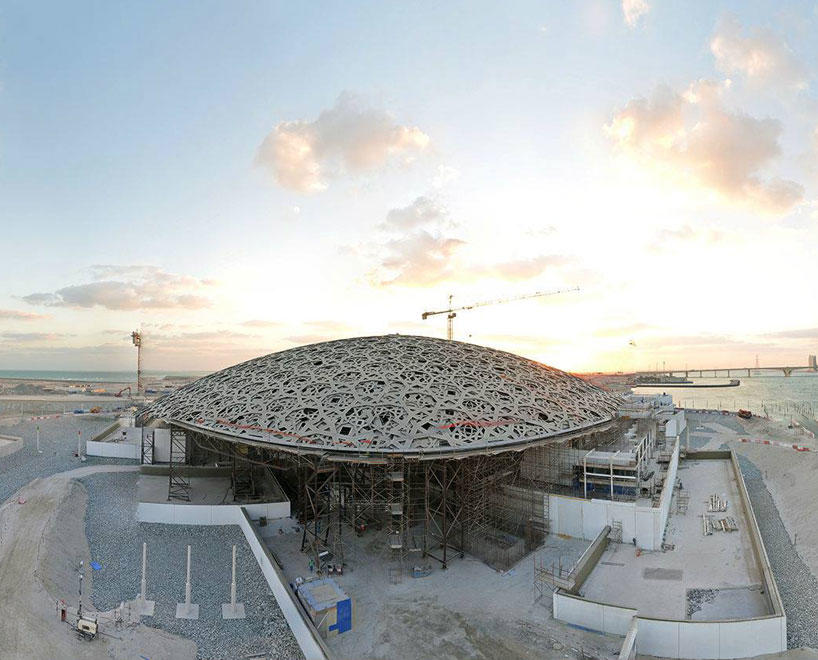

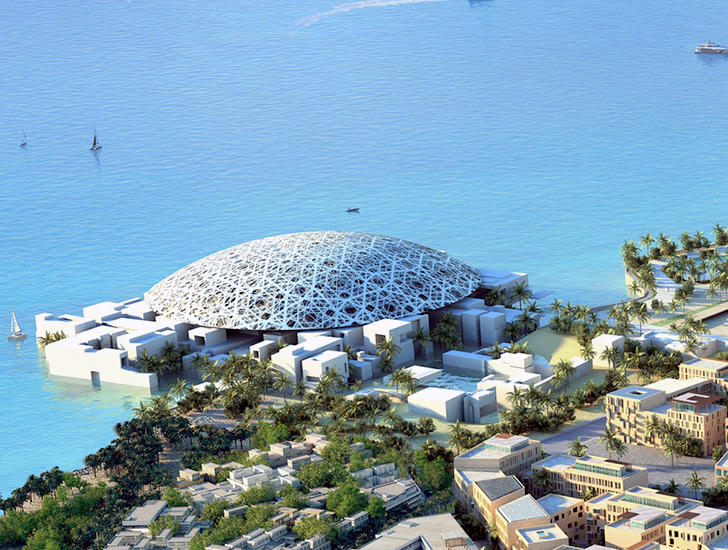
The designs have also incorporated a mixed-use development with multiple districts. As designers and architects strive to capture traditional Arabic design elements into their works, they also focus on advancing local cultures, avoiding controversial subjects, but promoting concerns for environmental protection. The Zayed National Museum, for instance, was developed with a set of five solar-thermal tower within protected areas. The five wings or the grand pavilions look like feathers of a bird’s wing, which are known to capture Sheikh’s love for birds and nature. Steel frames and concrete columns are the major materials used in these buildings.
The Zayed National Museum has some pod-like structures for the exhibition areas while the top-lit middle section of the building has galleries, which also connect visitors to cafes, shops, and auditorium. The museums are designed to provide walkways for visitors while private entrances and private parking spaces are available for important persons. Landscaping is also done protect the environment and for aesthetics. For instance, there are layered plantations to be done to show an impression of oasis-like appearance.
A pathway and a garden are some features that would join the museum to the water. Designs also consider plant species with drought tolerant and high salt tolerant traits, as well as humidity tolerant tendencies. Emirati tiles have been chosen for interior designs while furnishings are intended to capture hospitality and opulence of the Arab world.

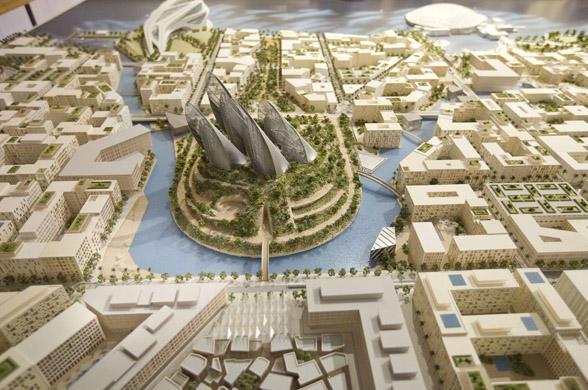
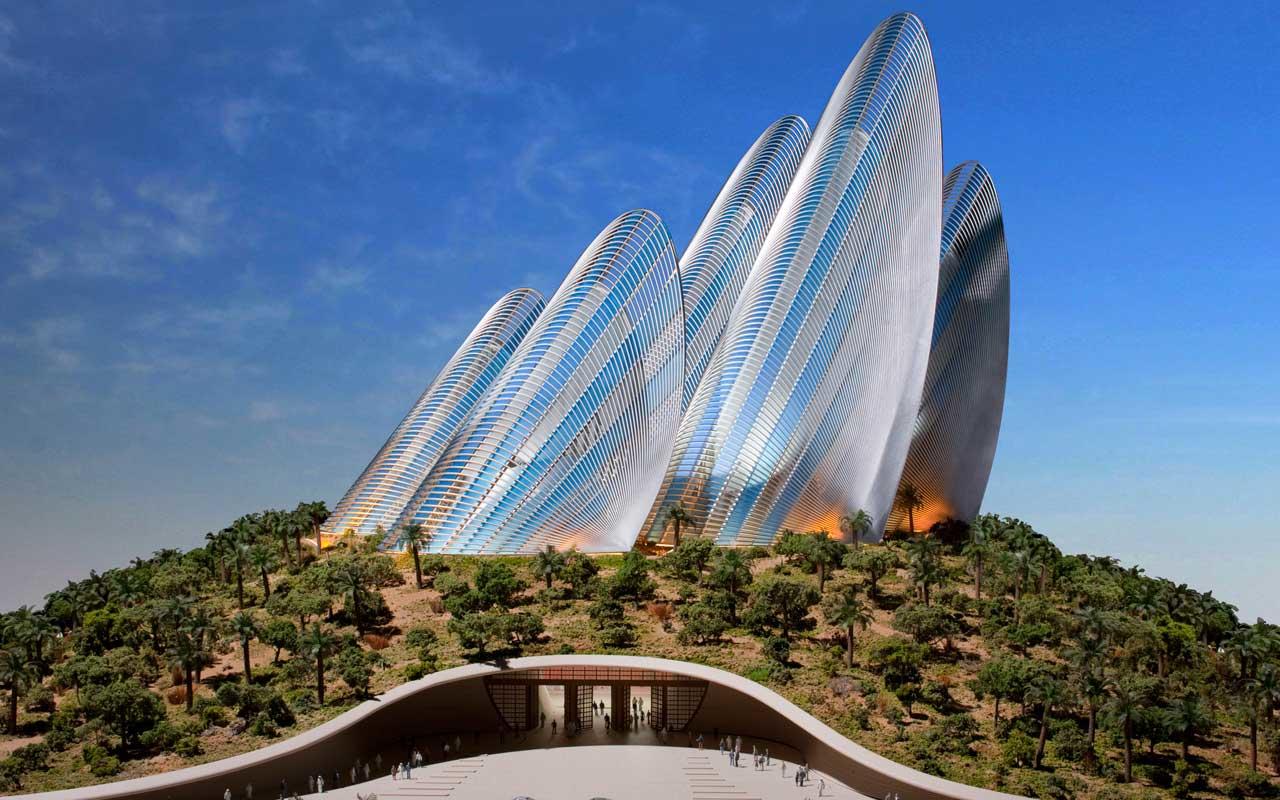
Lightweight steel structures, stones, bent steel, concrete, and local sand are some of the materials used in these buildings. For Abu Dhabi Guggenheim Museum, one must observe that the designers and architects have to develop completely a new form of architecture. The site construction site itself sits virtually on the water or touching the water on all sides. The designer intends to capture the blue water, the sky, and the sun all in a desert setting. This implies that the buildings do not look like their parent designs found in other regions.
Abu Dhabi Guggenheim Museum is intended to be a boxy curvy metallic design. The designer wants to create a courtyard using the main galleries. In addition, other galleries will also be included, but they vary in heights and sizes. These galleries will be constructed on top of each to provide four floors. The design wants to create galleries that are more classical and modern with advanced air conditioning features, skylight and highly developed lighting system. To advance sustainability efforts, the design is intended to have several rings of galleries, core galleries, and other larger galleries specifically created for special installations. In addition, another ring of galleries will appear unfinished but with abundant lighting and systems. As such, galleries are the main features of innovation at Abu Dhabi Guggenheim Museum. They will be present in different shapes, sizes, and heights to provide contemporary features for future studies and discourses based on designs. Abu Dhabi Guggenheim Museum is designed to be larger than Guggenheim Museum buildings located in various parts of the world.
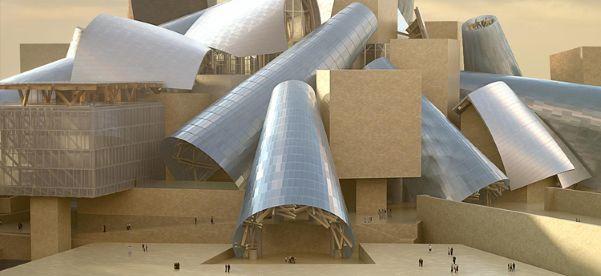
The Maritime Museum is designed to demonstrate Abu Dhabi’s long maritime history, relationship with water and the desert. While the building has simple features, the use of light, space, and water both outside and inside the building are meant to advance the green building design concepts. Sun controlling glazes and water saving installations will be some of the most vital fixtures within the building to keep it cool and conserve energy.
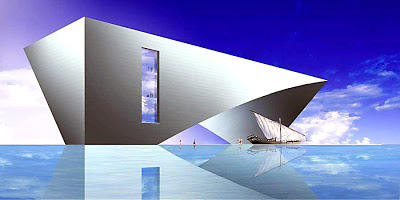
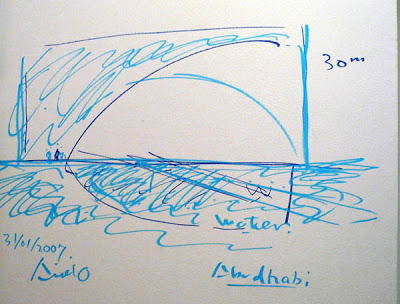
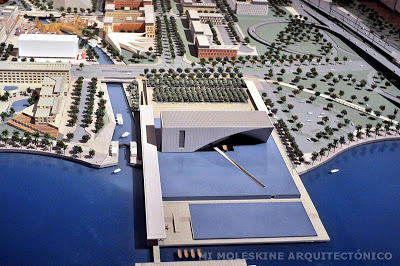
Museum Sustainability
Generally, all museums strive to reflect sustainability from all design aspects. In this case, they demonstrate that Abu Dhabi plans to be a sustainable city as reflected in its inspiration and visionary control of carefully planned and managed development. As such, all museums are the epitome of environmental sustainability in Abu Dhabi.
These museums have integrated multiple aspects of sustainability. In fact, some of them have earned green awards based on design innovations. The Louvre Abu Dhabi has incorporated light design strategies by applying natural form of designs and available features of materials to enhance outdoor conditions. These strategies include roof perforations to ensure that daylight can be experienced without excess solar heat into the building. In addition, designers incorporated light colour and reflective materials to reflect heat instead of allowing the buildings to absorb it. Further, the water system was fitted with flush and flow control mechanisms to reduce the volume of potable water required within the building.
These projects have also incorporated renewable and low energy technologies in their designs and construction. For instance, the Urban Planning Council (UPC) awarded a Three Pearl Design Rating Certificate to the Louvre Abu Dhabi because of its sustainability efforts. In fact, this was the first museum to earn such a certificate based on its scope and design. Hence, it can only confirm Abu Dhabi’s commitment to environmental protection and development.
The rating was based on a systematic assessment of the blueprint design of Louvre Abu Dhabi. In addition, experts from various areas, including structural engineers, consultants, and lighting consultants among others took part in the review process. Some of the notable findings to illustrate the building’s sustainability on energy efficiency were a reduction in external heat acquisition by 71.7% and reduced absorption of heat. The museum managed to achieve this reduction by designing highly insulated, airtight walls. Highly insulated, airtight walls are known to reduce heat transfer levels. Hence, the museum opted for low glazing ratio to minimise the use of windows, which also had significant effect in reducing heat transfer rates.
Further, the passive design approach was adopted to curtail massive energy consumption. Specifically, the dome of the museum represents the best case of low energy consumption. The dome acts as a canopy to protect the exterior plaza and other parts from the sun. The shade ensures that energy consumption is reduced. In fact, the dome is responsible for a reduction in energy consumption by about 30.8%. In addition, the dome is perforated to ensure that sunlight can be filtered through the building, but it can still offer the required shading over the building. This design technique lessens solar heat absorption while optimising thermal comfort in the entire building. Low energy consumption designs can only be noted in the extensive use of traditional mashrabiya-style shades noted in windows.
The museum is also light in colour and built from several reflective materials. In addition, the Zayed National Museum was also designed with specific sustainability features observed in the design. These design features were concentrated on minimising energy consumption and restrict discomfort that emanates from the solar. As previously noted, towers were some of the innovative designs of the museum, but they also had the role of reducing heat concentration and, thus, reducing the energy required to cool the building.
The design consideration also incorporated cooling pipes placed underground to supply fresh air trapped at the lower levels to the lobby areas. The thermal stack effect will be responsible for heat movement to the top of the tower to be expelled into the atmosphere through air vents. The museum also has evacuated solar tubes for warming water using direct sunlight rather than electric heater. Further, the building will also have photovoltaic panels and energy heat exchanger, which will be installed at specific locations to curtail energy consumption within the museum while advancing sustainability.
For Abu Dhabi Guggenheim Museum, it was noted the consultants were mainly concerned with finding various options of cooling outdoor spaces. It considers an old practice of the open-top tepee, which sucks hot air out of the building. As such, the building was designed with multiple conical shaped tubes, particularly for the galleries. They have also created space for the building.
The conical shapes have also been considered as entry points. In fact, they are a part of the main entry into the building and an entry to the boat, as well as a path that leads out of the museum into the desert landscape. In addition, the museum was also designed to use natural ventilation extensive – a common practice in the Gulf region for many centuries. The museum also has water walls within its major courtyard and other related sustainability features, which are currently under review to determine possible energy efficient practices.
Not much information is available on how the Maritime Museum will advance sustainability. Nevertheless, it was noted that designers have focused on wind, thermal effects, and other aspects related to climate to incorporate in their designers. Hence, sunlight control glazing and water saving installations are some of the major green building initiatives promoted by the museum.
Management Practices and Sustainability Challenges
Abu Dhabi museums are relatively new while others are planned. The current focus has not been on public education on green buildings and their relevant to the environment. In addition, sustainability efforts are seen as expensive for adopters while management capabilities from human capital appeared to be a major issue.
Discussion of Results
The four of the world’s most decorated architects, including Frank Gehry who designed Guggenheim Abu Dhabi; Jean Nouvel designed the Louvre Abu Dhabi; Tadao Ando is designing the Maritime Museum; and Foster + Partners designed the Zayed National Museum. These structures are developed as iconic green buildings meant to transform Abu Dhabi into cultural centre of the world.
From the results, the riding environmental consciousness of the architects and the green architecture approach adopted by Abu Dhabi appear paradoxical in an oil-rich nation. However, Abu Dhabi has focused on green buildings to advance forward-thinking green economy, and museums are among the perfect large architectural structures to convey this message to visitors and the world. While the museums are intended to create new wonders of the world, position Abu Dhabi as an advanced player in the heritage centre, attract more tourists, and increase tourism revenues, it is the works of architects and designers that many green building scholars seek to understand.
One must note the efficiency-oriented structural design approaches that these designers incorporated into their works as they explored innovations in green buildings. Given that the museums are meant to be close, designers sought to outdo each. It is also argued that architects in green-building projects consider Abu Dhabi as an emerging green city in which they can explore various ideas using eco-friendly designs as they challenge themselves. In these instances involving the four museums, it is observed that architects were concerned with energy efficiency, water conservation, and creating a microclimate, for instance, by influencing the movement of the wind and thermal heat within and outside the building.
Modern museums are considered unique (Pop & Borza, 2014). They are expected to use their resources efficiently to deliver useful information, products, and services to visitors and communities. It was previously observed that contemporary museums would have to face the increasing demands and expectations to meet environmental needs and customer expectations with diminishing or static resources. In this context, in the last decade, the focus has shifted to defining and comprehending the concept of sustainability of museums through green building concepts.
In fact, sustainability is now considered as the means to enhancing museum developments and resources deployed to achieve its goals (Pop & Borza, 2014; American Alliance of Museums, 2013). While museums were initially seen as centres for preservation of community heritage, sustainable museums are required to be active and attractive to visitors and communities and add value. On this note, museums must use resources sufficiently, survive, and meet their current and future objectives. Hence, green building concepts and sustainability have been incorporated in newly constructed museums while old ones have embarked on retrofitting (Rota et al., 2015; Pencarelli et al., 2016; Kuttner, 2009).
The abovementioned issues demonstrate why museums have become the centres of sustainability. The mission of every museum is preservation and, thus, sustainability is a part of their core mission. That is, museums exist to advance sustainability (Madan, 2011). Abu Dhabi museums have been developed or planned to advance the interest of society. In this regard, museums have vital roles to play in the execution of sustainable development initiatives. Therefore, Abu Dhabi museums are intended to integrate aspects of green buildings in structural designs and into their daily management practices to preserve the environment (Brophy & Wylie, 2006; Pop & Borza, 2014).
Sustainability is also seen as the most suitable approach for museums to utilise their resources efficiently to allow them to survive and thrive even if they have static resources. In Abu Dhabi museums, for instance, they are driven by the passion to be green not because they intend to but because they must to succeed and move into the future. Sustainability development oriented museums are most likely to survive and develop as they strive realise their economic, environmental, and socio-cultural goals.
This implies that, directly or indirectly, Abu Dhabi museums have focused on a positive approach in order to try to influence their vision of providing a green cultural city. For this reason, green Abu Dhabi museums focusing on thermal heat management, efficient energy use, low water consumption, less generation of water, creating microclimate and general protection of the sea and the desert landscape must apply principles of sustainable development and effective use of resources to realise their goals and advance the interests of all stakeholders. By concentrating on green buildings, specifically in museums’ constructions, the TDIC has understood the role of future museums in sustainability.
Conclusion and Recommendations
The discourse of sustainability is now vital for contemporary museums. It will significantly influence the mission and progress of future practices of museums, including cultural progress, environmental protection, and economic sustainability. In addition, sustainability would help Abu Dhabi museums to manage resources efficiently, cut budget deficit and enhance quality of life in the cultural city. Overall, all the four museums have incorporated, to greater extent, some aspects of green buildings in their designs.
Architects and designers focused on delivering optimal levels of environmental control, including efficient water usages; cooling system; the use of natural light; renewable and low energy technologies; and highly insulated, airtight walls. In addition, the designs are unique to specific buildings. For instance, the design of the Zayed National Museum significantly differs from the design of the Guggenheim Abu Dhabi, the Maritime Museum, or the Louvre Abu Dhabi. It was also imperative to observe that the museum, the Zayed National Museum and the Louvre Abu Dhabi have already won some awards related to green building innovations and technologies.
It is recommended that Abu Dhabi museums should focus on efficient use of resources while optimising their outputs to meet needs of the environment and communities. This approach is aimed at advancing sustainability efforts of the city and intend use of the museum as green buildings. Abu Dhabi museums must also look for the best management personnel to apply principles of management and practices and strategically allocate resources to educate visitors, communities, and demonstrate best practices in sustainability.
Therefore, museums should also be more engaged in public education about their newfound roles in sustainability by stressing the importance of sustainable building designs and eco-friendly practices. They can provide educational materials, exposition, and conferences that promote environmental conservation and sustainability. This would ensure that Abu Dhabi museums create values to visitors and communities through innovative designs, quality services, and general education. They are also most likely to attract more environmentally conscious visitors and tourists, which will ultimately lead to growth in tourism revenues as intended by the TDIC.
Finally, Abu Dhabi museums must become highly innovative to drive and sustain their green building efforts. Thus, innovative practices are vital for museums toward enhancing their sustainability agenda. Sustainability remains the most viable tool that Abu Dhabi museums can use to remain relevant in the global cultural landscape. This is therefore an implication for museum managers to focus on sustainability issues.
References
American Alliance of Museums. (2013). Museums, Environmental Sustainability and Our Future. Web.
Bickersteth, J. (2014). Environmental Conditions for Safeguarding Collections: What Should Our Set Points be? Studies in Conservation, 59(4), 218-224.
Brophy, S., & Wylie, E. (2006). It’s Easy Being. Green – Museums and the Green Movement. Museum News, 85(5), 38-45.
Byers, R. (2008). Green Museums and Green Exhibits: Communicating Sustainability through Content and Design. Web.
Kuttner, P. (2009). Museums, Natural Leaders in Green Design. Exhibitionist, 22-25.
Madan, R. (2011). Sustainable Museums: Strategies for the 21st Century. Edinburgh: MuseumsEtc Ltd.
Pencarelli, T., Cerquetti, M., & Splendiani, S. (2016). The Sustainable Management of Museums: An Italian Perspective. Tourism and Hospitality Management, 22(1), 29-46.
Pop, I. L., & Borza, A. (2014). Increasing the Sustainability of Museums through International Strategy. Economia – Seria Management, 17(2), 248-264.
Rota, M., Corgnatia, S. p., & Corato, L. D. (2015). The Museum in Historical Buildings: Energy and Systems – The Project of the Fondazione Musei Senesi. Energy and Buildings, 95, 138–143. doi: 10.1016/j.enbuild.2014.11.008.
Tardiff, S. (2016,). 7 Unconventional Museums with Innovative Architecture.
Zannis, G., Santamouris, M., Geros, V., Karatasou, S., Pavlou, K., & Assimakopoulos, M. (2006). Energy Efficiency in Retrofitted and New Museum Buildings in Europe. International Journal of Sustainable Energy, 25(3-4), 199-213.